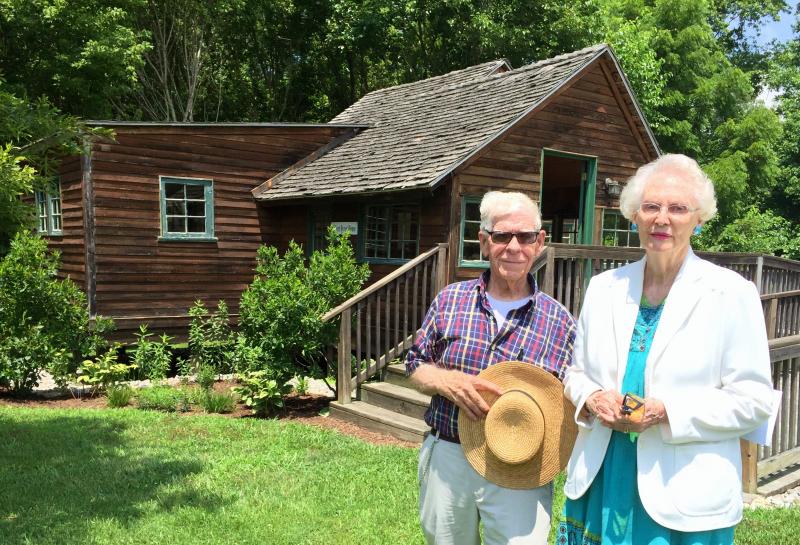Byron, blue crabs, and art for the professor
Hazel Brittingham and I drove to Pickering Creek Audubon Center in Easton, Md., recently. Joan Marshall had planned to make the trip with us, but in your late 80s you have to pick your spots. Hazel, a classmate of Joan’s since their earliest days in Lewes, does too, but on this day early in July it was one of the spots she picked.
Heading west across Delmarva, we crossed the Broadkill east of Milton and the Choptank - the peninsula’s longest river - east of Easton. We talked about soybeans and corn, people and places, and history. After icy tea and excellent crabcakes at the Washington Street Pub in downtown Easton, we made our way along tree-lined country roads in Talbot County to the Audubon Center.
It wasn’t a day for birds. It was a day for Byron. Gilbert Byron.
Once a year, admirers of the writer’s work and legacy gather at the center where Byron’s small house was moved several years ago. At its original location along Old House Cove near St. Michael’s, Byron wrote volumes of poetry, countless newspaper columns, short stories, and several novels including the nationally acclaimed “The Lord’s Oysters.” Chronicling the comings and goings of the seasons, Byron lived a Thoreau-like existence. His body of work still stands as one of the most prodigious collections written about the Chesapeake Bay and its people, flora and fauna.
Before he moved to that side of the peninsula, Byron taught school for a while in Dover and served as a principal in Lewes. Also in the Lewes school system, though not at the same time as Byron, Hazel developed a friendship with the author that lasted up until his death several years ago. He wrote about the salt marshes, the pilots, the proggers and the watermen around Lewes before moving to St. Michaels. Byron lived an iconic artistic life, scraping out a living from his writing and stretching every dollar through austere habits.
Following his death, the Gilbert Byron Society formed. Its members preserved the house he had built with his own hands by moving it to its current location on the grounds of the Audubon Center. Make a plan to visit there some day and read “The Lord’s Oysters” if you haven’t already.
In the meantime, enjoy one of Byron’s poems:
CRAB TALK
Momma sent me
To get the crabs
From old Benny,
Down on the creek
Where the shanty men seek
Happiness.
He was mending eel pots,
Tar and twine,
and deft seine needle;
Chewing tobacco,
Spitting fine,
Whistling softly.
He couldn’t even see
Little boys like me.
I heard them scratching
In a covered basket.
Shyly I whispered,
Scared almost dead,
“Are those the crabs,
Captain Ben?”
Rolling an eye, he grunted,
“Thems them.”
That’s all he said.
“Thems, them.”
A crab for Prof. Chuck
The Latin name for blue crabs - callinectus sapidus - translates roughly as beautiful swimmers. Chuck Epifanio spent a 46-year career studying blue crabs - and lots of other sea creatures - while teaching graduate students at University of Delaware’s marine college in Lewes. It’s not too much to say that Chuck became one of the world’s foremost authorities on blue crabs over those decades and can tell you more about every aspect of the crabs - including their twin-barbed sex lives - than you will ever want to know.
On the occasion of his recent retirement, Epi - as he’s known fondly by students and friends - received an enviable piece of artwork commissioned by former students. Lewes blacksmith and metal sculptor John Ellsworth fashioned a fully detailed, giant version of callinectus out of copper. Mounted upright on boards in Chuck’s yard, the crab has become a warm - but not steamed - reminder of the humble but delicious creature that provided Chuck with endless fodder for his and so many others’ research.





















































